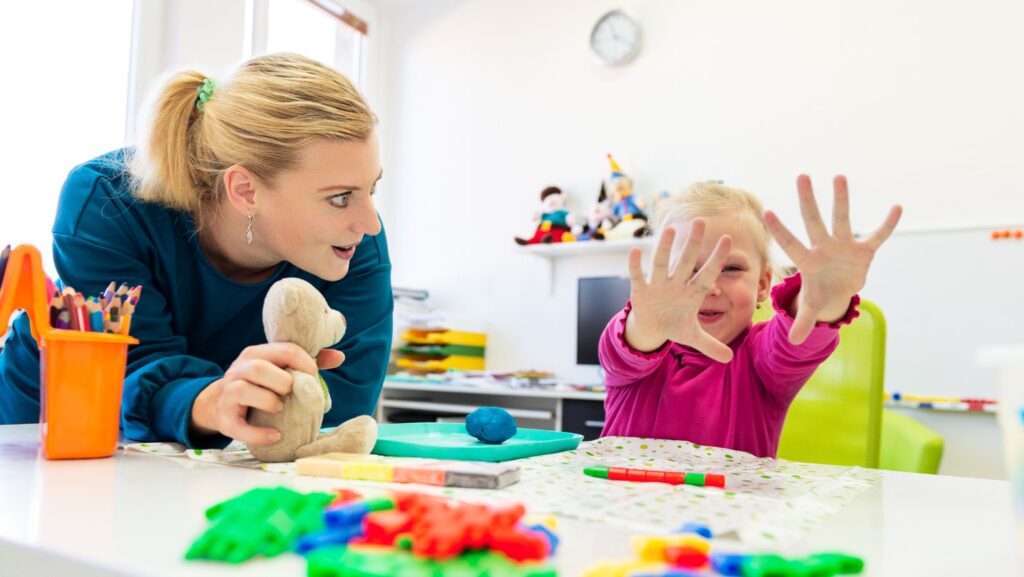Sensory play is a crucial component of occupational therapy for children. Effective sensory play ideas engage multiple senses and promote development across various domains. These activities can range from tactile experiences with different textures to movement-based games that challenge balance and coordination.
Occupational therapists utilize sensory play to address sensory processing challenges and support overall development. By incorporating elements such as messy play, nature exploration, and creative art projects, therapists can tailor activities to meet each child’s unique needs. These experiences not only provide sensory input but also enhance motor skills, cognitive function, and social interaction.
The benefits of occupational therapy activities extend beyond the therapy session. Sensory play helps children regulate their emotions, improve attention, and develop essential life skills. By engaging in purposeful and enjoyable activities, children can make significant progress in their sensory integration and overall functioning. The information provided is solely for educational purposes and does not replace professional medical advice. Please consult a healthcare provider for tailored guidance.
Key Takeaways
- Sensory play engages multiple senses and supports comprehensive development.
- Occupational therapists use diverse activities to address individual sensory needs.
Understanding Sensory Play in Occupational Therapy
Sensory play is a crucial component of occupational therapy, targeting the development and integration of sensory systems. It helps individuals process and respond to sensory information effectively, supporting daily functioning and participation in meaningful activities.
Fundamentals of Sensory Processing and Integration
Sensory processing involves the brain’s ability to receive, organize, and interpret information from the environment through various sensory systems. These systems include tactile (touch), vestibular (balance and movement), proprioceptive (body awareness), visual, auditory, gustatory (taste), and olfactory (smell). Sensory integration refers to the brain’s ability to combine and interpret this information to produce appropriate responses.
For individuals with sensory processing disorders or autism, these processes may be disrupted. They might experience hypersensitivity or hyposensitivity to certain stimuli, affecting their ability to engage in daily activities. Sensory play activities help address these challenges by providing controlled exposure to various sensory inputs.
Role of the Occupational Therapist
Occupational therapists play a vital role in assessing and addressing sensory processing issues.

They design individualized sensory diets, which are tailored plans of activities that provide specific sensory input to meet a person’s needs. These activities might include:
- Tactile experiences: Playing with textured materials or sensory bins
- Vestibular activities: Swinging or spinning
- Proprioceptive input: Heavy work activities or deep-pressure exercises
Therapists also educate families and caregivers about sensory processing and integration. They provide strategies to incorporate sensory activities into daily routines, promoting better regulation and participation in meaningful occupations.
Practical Sensory Play Ideas and Activities
Sensory play activities offer valuable opportunities for children to engage their senses and promote development. These activities can be easily implemented in occupational therapy sessions or at home to address various sensory needs.
Tactile and Messy Play
Tactile play engages the sense of touch and helps children explore different textures. Fill sensory bins with materials like rice, beans, or sand for texture exploration. Introduce shaving cream painting on a smooth surface to combine visual and tactile input. Create play dough or putty for squeezing and molding. Use water play with different temperatures and add bubbles for extra sensory fun.
Finger painting with various textures like smooth paint, gritty sand paint, or puffy paint provides diverse tactile experiences. Encourage barefoot walks on different surfaces such as grass, sand, or textured mats. Incorporate tactile discrimination games using hidden objects in a bag or box for children to identify by touch alone.
Vestibular and Proprioceptive Activities
Vestibular and proprioceptive activities focus on balance, movement, and body awareness. Set up an obstacle course with crawling tunnels, balance beams, and jumping stations. Use scooter boards for prone or seated propulsion to stimulate the vestibular system.
Incorporate swinging activities on various types of swings to provide vestibular input. Encourage animal walks like bear crawls or crab walks for proprioceptive feedback. Set up a crash pad area with pillows for safe jumping and landing practice.
Use therapy balls for bouncing, rolling, and balancing exercises. Create a simple hopscotch game with textured squares for combined proprioceptive and tactile input. Implement heavy work activities like pushing a loaded cart or carrying weighted items to provide deep pressure input.
Fine Motor Skills and Sensory Bins
Sensory bins offer versatile opportunities to combine fine motor skill development with sensory exploration. Create themed bins with materials like colored rice, small toys, and scooping tools. Use tweezers or tongs to pick up small objects from the bin, promoting pincer grasp.
Incorporate threading activities with various-sized beads and laces. Add kinetic sand to bins for molding and shaping exercises. Use water beads for a unique texture experience while practicing grasping skills.

Create a “hidden letter” bin with alphabet magnets buried in sensory material for letter recognition and retrieval. Implement sorting activities within the bin using different textures or colors. Add scented materials to bins for olfactory input while engaging in fine motor tasks.
Customizing Sensory Activities for Individual Needs
Tailor sensory activities to address specific sensory processing challenges. For children with tactile defensiveness, gradually introduce textures, starting with preferred materials. Use deep pressure techniques like squeezes or weighted blankets to help calm oversensitive systems.
Adjust the intensity of vestibular activities based on each child’s tolerance. Provide noise-cancelling headphones for children sensitive to auditory input during activities. Incorporate visual supports like picture schedules to help children with sensory processing issues understand activity sequences.
Use sensory break stations with calming items like stress balls or fidget toys. Implement aromatherapy with calming scents for children who benefit from olfactory input. Create personalized sensory kits with favorite textures and tools for self-regulation during therapy sessions or at home.
Conclusion
Sensory play offers valuable opportunities for occupational therapy interventions. It engages children’s senses and supports their development across multiple domains. Therapists can utilize a variety of activities tailored to each child’s needs and interests.
Incorporating sensory elements into play-based therapy sessions can yield significant benefits. It promotes skill acquisition in a fun, natural way for children. Occupational therapists have many options to create engaging sensory experiences.

